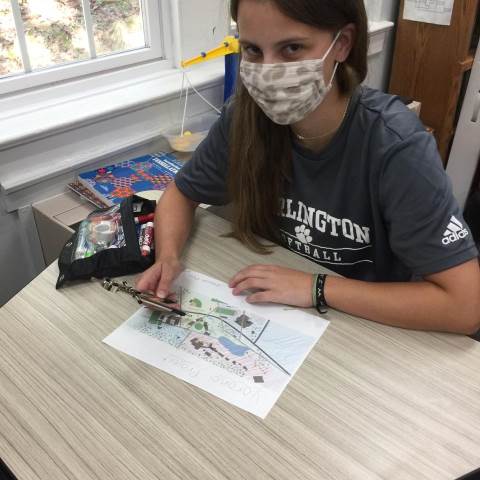

Voronoi diagrams may sound like a foreign term (technically it is since they are named after their founder, Georgy Voronoy), but Voronoi diagrams are very useful and can be found in many real world situations.
A Voronoi diagram consists of sites (points) placed at specific locations. Then, lines are placed dividing the sites into their own cells. The object of this is that any point inside that specific cell is closer to that site than any other site. This is useful when deciding which post office to go to. Each post office would be a site, and lines would divide them into cells. Depending on which cell you lived in would determine which post office would be closest to you. Since Darlington only has one post office, a Voronoi diagram of post offices would be unnecessary.
Darlington has seven AED devices, so this is what Mrs. Atkins’ Honors Geometry classes decided to make their Voronoi Diagram about.
The first step in this project was to map all the AED devices on a map of Darlington’s campus. Next, you have to connect each of the points. Then, a perpendicular bisector must be constructed through each line so seven in total. A compass and a straight edge are the tools required to construct a perpendicular bisector. You place the compass point on one end of the line segment and extend it over half the length of the segment. Then, you draw an arc and repeat starting on the other end of the segment. Finally, you draw a line through the intersection of the two arcs, and that is your perpendicular bisector. This process is repeated for each line segment until you have seven lines. These lines divide the map into seven cells with one AED device (site) in each cell. These diagrams can be crucial in saving a person's life. You need to get to the closest AED device in your cell to reach the person as soon as possible.